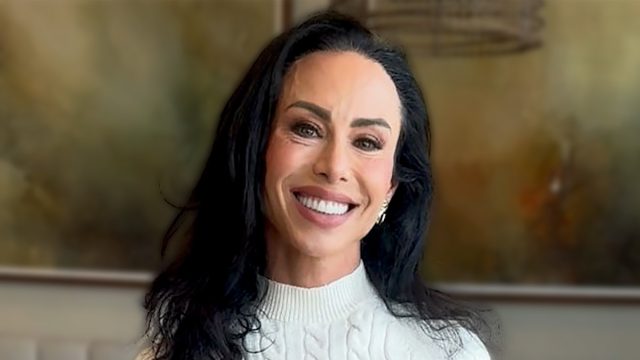You Lose 5% of Your Muscles Every Decade After 30 Unless You Do These 4 Things
Ever wondered what actually happens to your muscles as you age? The numbers are alarming: after age 30, you lose between 3% to 5% of your muscle mass every decade, with most people losing about 30% during their lifetime, according to Dr. Thomas W. Storer, director of the exercise physiology lab at Brigham and Women's Hospital. But here's the good news – you can prevent and even reverse this loss with four science-backed strategies.
"Skeletal muscle is the organ of longevity," explains Dr. Gabrielle Lyon, physician and author of "Forever Strong." In a revealing conversation on The Doctor's Farmacy with Dr. Mark Hyman, she shares exactly how to maintain your muscle mass at any age. "The health and trajectory of how we age and how we live is directly related to the health of our skeletal muscle."
Why Your Muscles Matter More Than You Think
"The health and trajectory of how we age and how we live is directly related to the health of our skeletal muscle," explains Dr. Lyon. Making up 40% of your body weight, muscle tissue isn't just for movement – it's a crucial metabolic organ that influences everything from blood sugar control to brain health.
The Hidden Dangers of Inactive Muscles
"There's no such thing as healthy sedentary skeletal muscle," warns Dr. Lyon. She explains that inactive muscles become "like a swamp," leading to metabolic dysfunction. Warning signs of unhealthy muscles include high triglycerides, high insulin, high A1C, high blood sugar, and inflammation.
The Metabolic Powerhouse
Dr. Lyon emphasizes that muscle is "the primary site for glucose disposal." As Dr. Hyman adds, "That's why exercising helps with insulin resistance and diabetes and blood sugar control because it sort of basically sucks up all the glucose."
The Brain-Muscle Connection You Never Knew About
"Contracting skeletal muscle releases irisin and BDNF, which is miracle growth for the brain," explains Dr. Hyman. This connection helps explain why exercise reduces the risk of Alzheimer's and improves cognitive function.
Myokines Are Your Muscle Messengers
"These myokines are peptide hormones released by exercising skeletal muscle based on the duration and intensity of training," Dr. Lyon explains. They help regulate metabolism, reduce inflammation, and even boost brain function. Unlike inflammatory cytokines from immune cells, muscle-derived molecules tend to have anti-inflammatory effects.
The Right Way to Exercise for Muscle Health
"The only way to do it wrong is to not do it," emphasizes Dr. Lyon. She recommends:
- Full-body resistance training 2-3 times per week
- Sessions lasting about 45 minutes
- Focus on compound movements
- Training to near fatigue
- Using machines for better form (what she calls "high ground training").
Dr. Storer recommends "8 to 10 exercises that target all the major muscle groups" with "sets of 12 to 15 reps."
High Ground Training
Dr. Lyon introduces the concept of "high ground training," explaining that using supported positions and machines can actually help you target muscles more effectively. "When you increase contact, you are now training the muscle with the intensity," she explains.
RELATED: This Woman Lost 13 Pounds at 40 By Completely Changing 3 Exercise Habits
The Protein Factor: Eating for Muscle Health
Proper nutrition is crucial for muscle maintenance. Dr. Lyon recommends:
- 0.7-1.0 grams of protein per pound of ideal body weight daily
- 30-50 grams of protein at your first meal
- Protein intake within 30-60 minutes post-exercise (for older adults)
- Even protein distribution throughout the day.
Timing Your Meals for Maximum Muscle Benefit
"That first meal of the day is critical because you're coming out of an overnight fast," Dr. Lyon emphasizes. She explains that morning protein intake combined with reduced carbohydrates and exercise creates "a fantastic synergistic effect."
Plant vs. Animal Protein
While both sources can work, Dr. Lyon notes that plant proteins may require about 30% more total intake to achieve the same benefits as animal protein. "If you are older and you are not highly active, then if your idea is to eat whole foods from plant-based proteins, you have to watch total calories and carbohydrates," she cautions.
Overcoming Age-Related Challenges
"Anabolic resistance" makes it harder to build muscle as we age, but Dr. Lyon explains how to overcome this: "How do we make your skeletal muscle respond like younger skeletal muscle? You do that by resistance training and the synergistic influence of amino acids."
Warning Signs of Muscle Problems
Dr. Lyon identifies several key indicators of poor muscle health:
- High triglycerides
- High insulin levels
- Elevated A1C
- High blood sugar
- Small LDL particles
- Chronic inflammation.
RELATED: Woman Loses 80 Pounds After Changing This Morning Dunkin' Habit
It's Never Too Late to Start
When Dr. Hyman asked if it was too late for him to start at age 59, Dr. Lyon responded emphatically: "The only time it's late to start is if you don't start." She shares the example of Dr. Hyman's father making significant gains at age 89 after starting resistance training.
"If you fail to do these very practical things," warns Dr. Lyon, "you will find as you age, the practicality of your life becomes impossible."
Dr. Hyman notes, "Your muscle's not just a bunch of tissue dragging your skeleton around – it's a very dynamic organ and probably the biggest organ in our body." Taking care of it isn't optional; it's essential for healthy aging. And if you enjoyed this article, take advantage of these 20 Superfoods for People Over 50.





